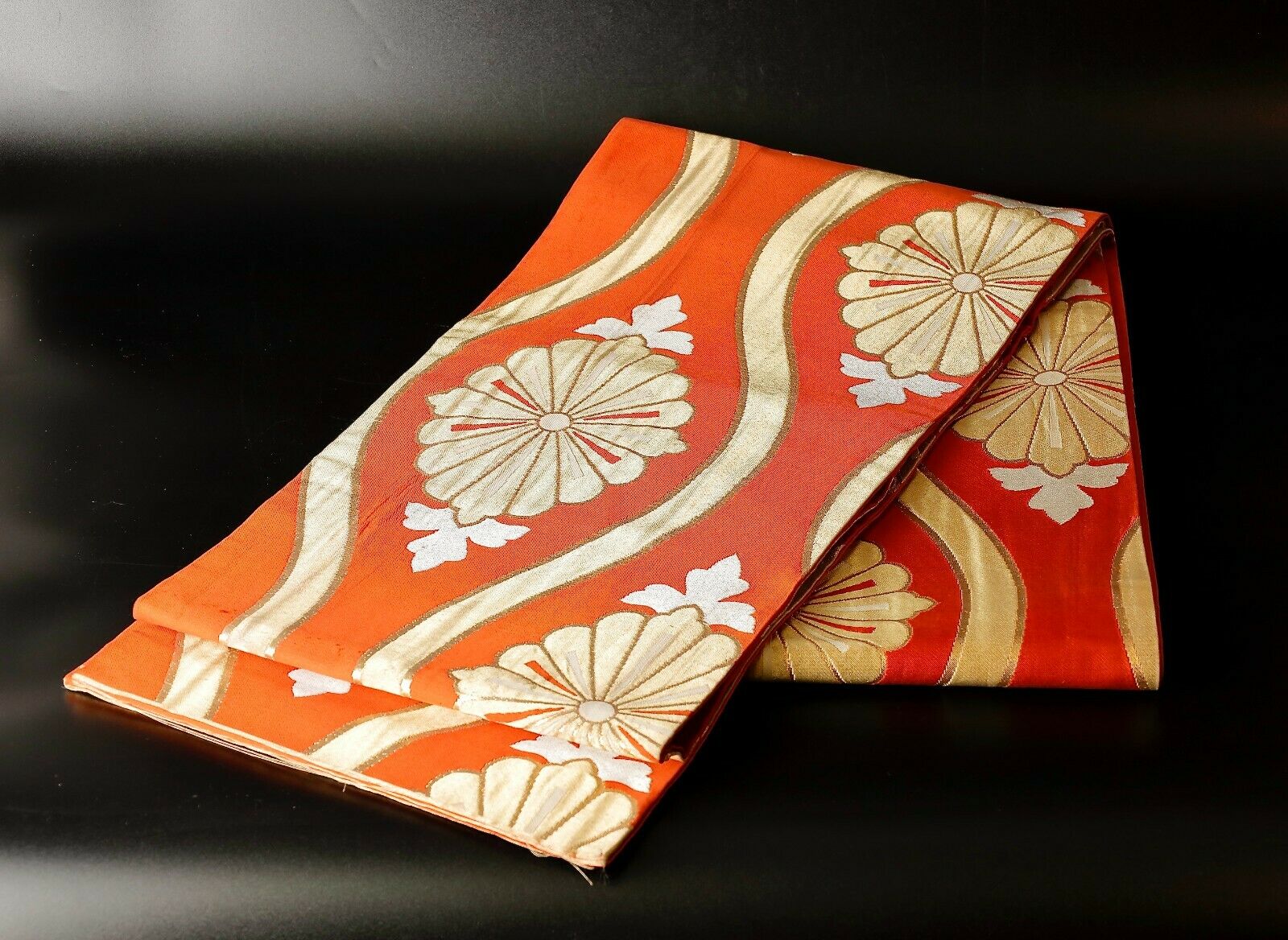-40%
Exquisite Meiji Era (1868-1912) Maru Formal Obi / Red Crested Cranes Silk
$ 40.12
- Description
- Size Guide
Description
Ō¢¬ŌÆĘŌōżŌō©Ō¢¬ŌōéŌōöŌ¢¬ŌÆĘŌōżŌō©Ō¢¬ŌōéŌōöŌ¢¬ŌÆĘŌōżŌō©Ō¢¬ŌōéŌōöŌ¢¬ŌÆĘŌōżŌō©Ō¢¬ŌōéŌōöŌ¢¬ŌÆĘŌōżŌō©Ō¢¬ŌōéŌōöŌ¢¬ŌÆĘŌōżŌō©Ō¢¬ŌōéŌōöŌ¢¬Antique Formal
Silk Maru Obi
Ō¢¬ŌÆĘŌōżŌō©Ō¢¬ŌōéŌōöŌ¢¬ŌÆĘŌōżŌō©Ō¢¬ŌōéŌōöŌ¢¬ŌÆĘŌōżŌō©Ō¢¬ŌōéŌōöŌ¢¬ŌÆĘŌōżŌō©Ō¢¬ŌōéŌōöŌ¢¬ŌÆĘŌōżŌō©Ō¢¬ŌōéŌōöŌ¢¬ŌÆĘŌōżŌō©Ō¢¬ŌōéŌōöŌ¢¬
Meiji Era (1868 - 1912)
In 1867/68, the Tokugawa era found an end in the Meiji Restoration. The emperor Meiji was moved from Kyoto to Tokyo which became the new capital; his imperial power was restored. The actual political power was transferred from the Tokugawa Bakufu into the hands of a small group of nobles and former samurai.
***The Pictures Don't Do It Justice***
This obi can be used as a table runner or may be cut (gasp!) for place-mats. ┬ĀDrapes perfectly across the top-floor-to-floor the Japanese Kimono Tansu 3-Piece Chest (eBay Item #321847828478) we are offering.
Dimensions
73
┬Š
" long x 11
┬Š" wide ┬Ā(377cm x 29.84cm)
A Maru obi┬Ā(one-piece obi) is the most formal obi. It is made from cloth about 68 cm wide and is folded around a double lining and sewn together. The ornate pattern is along the entire length and on both sides. Maru obis were at their most popular during the Taisho and Meiji-periods. Their bulk and weight makes maru obis difficult to handle and nowadays they are worn mostly by geishas, maikos and others such. Another use for maru obi is as a part of a bride's outfit. A maru obi is about 30 centimetres (12 in) to 35 centimetres (14 in) wide and 360 centimetres (11.8 ft) to 450 centimetres (14.8 ft) long, fully patterned and often embroidered with metal-coated yarn and foil work.
We Insure Packages >
PAYPAL
ONLY
Payment is expected within 3 business days.
We have cats as pets.
Non-smoking household.
E-mail┬Āus with any questions before you bid.┬Ā Communication is
extremely
important.
Ōś║
ŌōģŌōÉŌō©ŌōģŌōÉ
Ōōø
Verified
















